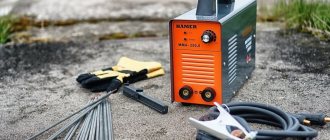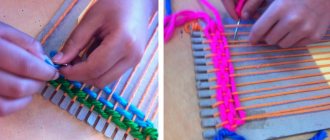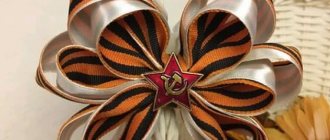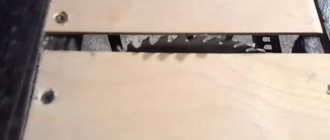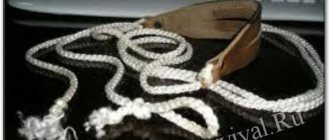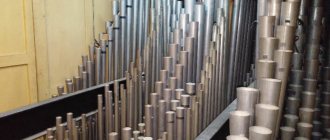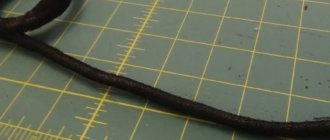Home / Welding technique
Back
Reading time: 3 min
0
3515
Polyethylene film is widely used in various fields. Some uses of it involve the connection of several elements.
For example, when covering greenhouse frames or forming insulating layers during construction.
Welding of polyethylene materials, including film, can be done at home. This article will tell you about the equipment necessary for welding polyethylene, as well as the technology for independent soldering of this material.
- Soldering technology
- Tools and appliances Soldering iron
- Soldering with a soldering iron
Welding PVC profile
The production of metal-plastic windows consists of many stages - technological operations. One of the most important technological operations in the process of manufacturing a PVC window is welding the PVC profile. At this stage, the perimeter of the future window is formed from blanks of frames and sashes. In this article we will analyze the basics of technology and types of welding machines (machines) according to their functional purpose.
Welding PVC profile
If you are just going to work in the window industry or want to study window production technology, you must immediately clarify that, although the window is called “metal-plastic,” no metal welding occurs.
The main component of the window profile is PVC - polyvinyl chloride with various additives: plasticizers, heat stabilizers, fillers and dyes. The exact proportions of these additives are kept secret by profile manufacturers (profilers). The melting point of these mixtures varies from 150 to 250˚C and is indicated in the processor’s profile folders.
There are various ways to connect solid plastics to each other: mechanically (using clamps, friction), chemically (with a solvent), using ultrasound, gas, laser, etc. The most common technology in the manufacture of PVC windows is heat sealing. This technology is based on heating a PVC profile in compliance with three important conditions: temperature, pressure and time. Among window market professionals, this technology is called PVC profile welding.
Why are windows called metal-plastic? A metal profile is installed inside the PVC profile in a special chamber to impart rigidity to the entire structure. This metal reinforcement is attached to the walls of the PVC profile along the entire length, but is not welded in the corners. Thus, in metal-plastic windows, only the PVC profile is welded.
Despite the wide variety of technologies and design features used, each welding head of a welding machine includes a heating mirror in the form of a plate with a heating element and a thermoelement, on which a sleeve is put on, special pads are attached or a Teflon (PTFE) film is glued. PTFE film is a fiberglass base impregnated with a non-stick coating. The temperature on the welding mirrors is maintained around 230-250˚C.
Welding head: limit knives, tsulagi, mirror with Teflon film
To work with various profile systems, special counter-profiles (tsulagi) are required for the correct positioning of a specific profile in the machine.
The welding cycle takes place in several stages:
- Profile laying
- Positioning
- Warming up
- Welding
- Cooling of the welded profile
All welding parameters (mirror temperature, pressure, melting and cooling time, etc.) are adjusted in accordance with the recommendations of the profile manufacturer.
The most important indicators for welding a PVC profile are the geometry of the window and the strength of the welded joint.
In accordance with the recommendations of the profile manufacturers, the welding cycle is adjusted so that the weld deposit appears uniform along the entire length. The color of the weld deposit for a white profile should be white, there should be no traces of burning or “bubbles”. Burning marks are the result of overheating of the PVC profile, which leads to the destruction of its structure. Bubbles indicate that the temperature of the welding mirrors is too low and, as a result, the quality of the welded joint is poor.
The quality of the weld is influenced by many other factors: the accuracy of the cut length, the accuracy of the cut angle, the actual temperature of the welding mirror at different points, the profile temperature and the room temperature, room humidity, PVC shavings and shavings from the reinforcement on the cut, the design of the counter-profiles ( tsulag), oil, drafts.
The strength of the welded joint is checked at certain intervals, using a special test bench for this purpose or hanging a load on a sawn-off corner. The calculated strength values of corner joints for profiles of specific sections are established in the manufacturer's technical documentation and in GOST standards: GOST 30674-99, GOST 30673-99.
Window installation and proper fastening
All gaps between the walls and the frame of the installed window are filled with polyurethane foam and covered with a waterproofing film.
Substrates are placed on the lower edge of the opening; these can be wooden blocks, or you can purchase ready-made plastic pads. They are installed along the edges and in the center of the frame, and the frame or the entire window assembly is supported on the substrate; this will depend on the installation method you have chosen.
To secure the window on the sides, pegs are also used; they are installed along the edges so as not to cause the frame to warp. Using a water level, the window is installed horizontally; using a bubble level is undesirable, since it has less accuracy. To install the plane vertically, a plumb line is used. After this, you can install the anchors.
If the block is fastened through a frame, then first holes are made in it using an electric drill and holes are drilled into the wall using a hammer drill. First, the window is fastened on both sides at the bottom, the correctness of its installation is checked, and then the anchors are attached at the top and in the middle. The correct installation is checked again and the anchors are tightened.
If fastening is carried out through special fasteners (ears), then they already have space for anchors. In this case, the lower part is also attached first, and then the middle and upper parts, and at each stage the correct installation is monitored.
There is a special groove in the frame for fastening the drainage system; it can be additionally attached to the frame using screws.
After installing the frame, the window is assembled, everything is done in the reverse order that it was when disassembling it. After installing the double-glazed window, first install the top and bottom, and then the side beads, this is done using a rubber hammer. Install the doors and check how they open; they should not open or close on their own.
The next step is to seal the gap between the frame and the wall. Typically, polyurethane foam is used. The disadvantage of foam is that under the influence of natural factors it loses its properties, and to protect it it is necessary to create a good water barrier.
From the inside, you need to cover the foam with a special hydro-vapor barrier self-adhesive tape; it does not stick underneath. A moisture-resistant but vapor-permeable film is glued to the outside. A strip with a foil-coated surface is glued to the bottom, then it is covered with a window sill. After one edge of the film is glued to the frame, the space is filled with foam. In order for the foam to polymerize better, the surfaces must be moistened with water, then the tape is attached to the wall.
Types of welding machines
For the process of welding PVC profiles, special welding machines are used. All welding machines can be classified:
1. By the number of welding heads: a welding machine can have one, two, four or even 6 or 8 welding heads. Accordingly, in one cycle single-head welding will weld only one corner, two-head welding will weld two corners, and four-head welding will weld four corners. a six-head machine will allow you to weld an impost into a frame simultaneously with welding 4 corners (an impost is a window element dividing a window or doorway).
SL6 Q – automatic six-head welding machine for welding rectangular structures with simultaneous direct welding of the impost into the frame
2. According to the design features, welding machines can be free-standing or as part of a welding and stripping line, can be vertical or horizontal, with in-line welding heads or forming a rectangular perimeter, with diagonal or parallel convergence of heads, with fixed or variable (from 0. 2 to 2 mm) thickness of the weld deposit.
3. In terms of productivity, welding machines can have a standard or shortened welding cycle. Shorter welding cycles mean higher productivity.
An example of a fast cycle welding machine is the SL4-FS. Servo drives allow profiles to be brought together at an adjustable speed, which is controlled by the program. The result is faster welding cycle times, higher productivity and stronger fillet joints.
Also, increased productivity can be achieved by increasing the temperature and/or area of the welding mirror and the ability to weld identical perimeters in two layers (two circuits at the same time).
4. In terms of functionality. Single-function machines perform only one technological operation - PVC welding. Multifunctional machines perform several technological operations, for example, drilling, milling, and welding of imposts.
5. According to the degree of automation, welding machines can be divided into manual (desktop), standard and automatic welding machines. Standard welding refers to free-standing single-head and double-head welding machines, on which the stacking and positioning of workpieces is done manually. Welding machines have CNC axial control, which allows the welding heads to be positioned according to a given size, and all the necessary parameters for welding each profile on these machines are programmed once.
Welding machines on the Russian market are represented by manufacturers from Europe, Turkey and China. Some manufacturers offer only a few models of welding machines, while others have a wider range of models.
Let's look at the main types of welding machines using the example of the FIMTEC line, starting with standard machines, time-tested and proven to be unpretentious and reliable, and ending with the latest generation automatic welding machines with the latest unique technologies.
Do-it-yourself double-glazed window
In the era of a general transition to plastic windows, the cost of ordinary glass sharply approaches zero, since it is enough to negotiate with window installers or pick up frames with glass from entrances or garbage cans.
Everything is good about plastic windows, but they are somewhat confused by their cost and sometimes by the need to order production for a unique window opening size.
In my case, I was confused by both parameters and I made a double-glazed window with my own hands. The budget for manufacturing a homemade double-glazed window was no more than 100 rubles (sealant, bars, some foam for installation). The only thing you need is a good glass cutter and the ability to use it. I use a roller glass cutter with a hollow handle to pour in the oil, this way when cutting the glass the oil gets into the scratch and makes it easier to separate what you need from what you don't need.
The remaining procedures are very simple: we glue glazing beads to the sealant, and an arbitrary number of internal glasses to them on the sealant, thus creating the required number of air chambers. In the simplest case, it is enough to glue only 2 glasses - on the inside and outside of the frame.
It is advisable to frame the street side of the glass unit with plastic corners, also using sealant.
The method is suitable for glazing window openings in a country house, in a bathhouse, in a garage, and maybe somewhere else - it turns out very warm and very cheap.
An article about glass cutting is presented on my website: link
The rest of the information is presented in the video:
Catalog of channel articles: link
Single head welding machines
This is a universal category of welding machines with a capacity of up to 30 standard PVC windows per eight-hour shift. These machines allow you to weld both rectangular structures and non-standard products with acute and obtuse angles: trapezoids, triangles, etc. A special feature of these machines is a wide and high welding mirror for the ability to weld various profiles at sharp angles. Examples of such machines: SL V, SL TV.
SL V – single head welding machine for angles 30° – 180°
SL TV – single head welding machine for angles 30° – 180° with T-welding capability
SL V is a machine for welding rectangular and non-standard structures. The machine can weld white profiles with a weld thickness of 2 mm and laminated profiles with a weld thickness of 0.2 mm. Butt welding, right angle and acute angle up to 30°. The high and wide welding mirror allows you to weld door profiles at sharp angles.
SL TV - differs from the previous machine by the possibility of V-shaped welding of the impost, T-shaped welding and cross welding. Technological productivity of both machines: 4 corners in 8 minutes.
Installation of plastic windows
Making plastic windows yourself is not easy, but, as practice shows, it is possible. Euro-windows have a number of advantages, but the price of the finished structure is often quite high. This is especially noticeable if you plan to install plastic windows in a house with window openings of non-standard sizes. In this regard, many people are thinking about making plastic windows with their own hands.
Double head welding machines
The productivity of double-head machines is up to 60 standard PVC windows per eight-hour shift. The main purpose is to simultaneously weld two 90° angles. The machines can also weld non-standard structures with acute and obtuse angles (trapezoids and triangles). Weld width for white profile: 2 mm, for laminated profile: 0.2 mm. Variants of machines with different maximum welding lengths are presented. The machines can be equipped with a liquid crystal display. Many machine versions with a different set of options provide the choice of the required machine configuration.
Examples of machines of this type:
SL2-2 is a welding machine with a fixed weld thickness of 2 mm for white profiles or 0.2 mm in the version for laminated profiles. One of the most common two-head welding machines on the Russian market. A simple and reliable welding machine.
SL2-2 – double head welding machine
SL2 E – welding machine with a fixed weld thickness of 2 or 0.2 mm (specified when ordering). One of the most common two-head welding machines on the Russian market due to its simplicity and reliability.
SL2 VE - the difference between this model is the ability to smoothly adjust the welding angle from 30° to 180° on the right head.
Technological performance of SL2 : 4 corners in 4 minutes.
Video description
How to choose an original CANDAN soldering iron, watch the video:
DIOLD ASPT-4
Sword-shaped welding machine 1.5 kW. The kit includes a metal case, 6 nozzles with a cross-section of 20-63 mm, gloves, a tape measure, and a pipe cutter. Up to 3 pairs of nozzles can be installed on the heater at the same time; it heats up quite quickly.
The main advantage of the Diold ASPT-4 welding machine is its maximum configuration Source gadgetok.ru
Attention! When purchasing, check the calibration of the temperature setting regulator with a pyrometer.
The stand is made of plastic, it is not attached firmly enough, that is, it needs to be modified. The Chinese pipe cutter included in the kit also does not work effectively. But, in general, this soldering iron for polypropylene pipes is worth the money; with minor shortcomings, it works great.
Advantages:
- high-quality complete nozzles;
- ease of use;
- reliable case with durable fastenings;
- fast heating.
Flaws:
- the pipe cutter included in the kit is not suitable for the job;
- poor quality stand.
In-line multi-head welding machines
As the name suggests, in-line welding machines have heads arranged in a row. The main feature of such machines is the ability to rotate the welding heads towards each other and the possibility of V-shaped welding of the impost.
Turning the welding heads allows you to perform H-shaped welding of the impost and welding of non-standard structures with sharp and obtuse angles (trapezoids and triangles). Also, these machines can do T-shaped and cross welding of white profiles with a standard weld width of 2 mm and laminated profiles with a weld width of 0.2 mm.
In-line welding machines are universal – they also do an excellent job of welding standard rectangular structures.
The technology of V-shaped welding of imposts is not widespread in Russia, but is popular in European countries. When using this technology, a closed window contour is ensured and many people like the appearance of structures with V-shaped welding of the impost.
V-shaped welding of an impost using the SL5-TFF EVO machine
Looking ahead a little, we would like to say that this is not the only technology that provides welding of the impost. FIMTEC offers its customers welding machines that provide direct welding of the mullion without the need for a V-cut.
Consider the machines of the SL-UNI . All machines in this series allow smooth adjustment of the welding angle from 30° to 180°. The thickness of the weld is set to 2 or 0.2 mm for welding white and colored profiles, respectively. By aligning all welding heads, the machines can weld one, two (on four-head machines) or three (on five-head machines) mullions at the same time.
UNI series in-line welding machines
SL2 UNI is a two-head welding machine for simultaneous welding of two 90° angles, as well as H-shaped, TT-shaped, cross and non-standard structures with acute and obtuse angles (trapezoids, triangles, etc.).
SL3 UNI is a universal three-head welding machine (1 universal head and 2 universal rotating heads) for simultaneous welding of two rectangular corners, U-shaped structures at an angle of 90°, H-shaped, TTT-shaped, non-standard structures.
SL4 UNI is a universal welding machine with four universal rotatable welding heads that allows you to simultaneously weld three rectangular corners or weld two imposts into a rectangular structure.
SL5 UNI is a universal five-head welding machine (3 universal heads and 2 universal rotating heads) that allows you to simultaneously weld four rectangular corners or weld three imposts into a rectangular structure.
Outside the UNI , it is worth noting the SL5-TFF EVO machine for welding two 90° angles and simultaneous V-shaped welding of up to three imposts. The uniqueness of this machine is welding without welding (V-Perfect technology) and the ability to weld profiles made of composite materials (PVC profiles with aluminum or wood overlays, profiles with non-weldable coatings, such as aluminum foil, wood veneer, acrylic coating). The welded joint does not require subsequent cleaning.
SL5-TFF EVO – in-line five-head machine based on V-Perfect technology – welding is performed without buildup, corner joints do not require subsequent cleaning
Making a soldering iron for plastic with your own hands
Every man planning to change water pipes in his home should have a special soldering iron that can solder polypropylene pipes. Without it, it will not be possible to correctly connect fittings and pipes into one system. It is unlikely that it will be rational to purchase an expensive device if it will be used, at best, once every few years.
Of course, there are cheaper soldering irons for polypropylene, but they are considered practically disposable. If you want to save money and get a really high-quality tool, then it’s better to make it yourself.
Materials and tools for homemade work • an old iron (the main thing is that it has a heating element in good condition); • Soviet metal construction set; • the drill has a special rubberized handle, which is what you will need for homemade work; • toggle switch; • Bulgarian; • asbestos cord; • electrical tape.
The process of making a soldering iron With this device you can solder not only pipes, but also other useful household items made of polypropylene, if desired. Plastic nowadays replaces half of other expensive materials.
Step 1. Disassembling the old iron At this stage, you will need an angle grinder, the heating element of the iron must be removed from unnecessary parts and an aluminum cover must be made. We leave only the heating element, light bulb and heating power regulator.
Step 2. Base from a metal construction set A box is made from the construction set, a drill handle and an iron light bulb are attached to it. The wire must be connected to an on/off switch and heating control. All wires are connected together.
Step 3. Assembling the soldering iron The metal box from the designer must be attached to the base. There must be an asbestos gasket between these elements. The box is screwed with regular bolts.
Conclusion A soldering iron for plastic was made quite quickly and without much effort. A very useful thing, considering that only old and unnecessary materials for the home were used for its production.
Four Head Welding Machines
The main purpose of machines in this category is simultaneous welding of all corners of the frame or sash.
Most often, welding machines (machines) are horizontal, which allows them to be built into a single line with a stripping machine.
Welding and cleaning line SL4 U + WP CNC 2
Welding machines have different bases and a wide range of options that expand the functionality of the welding machine. Examples of functional features of machines that may be present in the basic configuration or as additional options:
- parallel or diagonal bringing together of heads;
- automatic adjustment of the weld thickness from 2 mm. by 0.2 mm;
- drilling for the impost during the welding cycle;
- direct welding of the impost without the need for a V-shaped cut in the frame;
- system for crimping seals when using drawn or co-extruded seals.
FIMTEC has machines of this type represented by the SL4 with a technological productivity of 120-150 products per eight-hour shift.
The machines can be free-standing or as part of a line with a rotating station and a stripping machine. The machines automatically perform welding head positioning, heating, welding and cooling. Upon completion of the last operation, the welded frame is transported to the cooling table for subsequent cleaning.
Examples of “classic” four-head machines:
SL4-4 is a budget-class four-head welding machine for welding rectangular structures with a fixed weld thickness, which is specified when ordering.
SL4 U - a four-head welding machine is a “constructor” with a large selection of options that expand its functionality. The machine can be equipped with an automatic system for adjusting the thickness of the weld seam, parallel or diagonal reduction of welding heads, a system for crimping seals when using drawn or co-extruded seals and an option for welding U-shaped structures.
SL4 U – automatic four-head welding machine for simultaneous welding of 4 sides of PVC profiles
Do-it-yourself double-glazed windows at home in detail!
Someone will say why, when you can simply order from a glass company?
Of course, you can order and buy anything, but it costs a lot of money and time when you need to do something non-standard. And especially if you live in a small town and there are not always companies that can do what you have in mind.
I show photos of what I bought and used. I drew my assembly diagram.
No one in the city made such double-glazed windows. Some companies told me: “we’ll do it,” citing exorbitant prices and indecently long terms. I made them myself, and as a result I got windows that did not break during the 5 years I lived there: neither from empty bottles, nor from ice and icicles flying from the roof.
The hardened ten withstands blows perfectly; if I had also glued a protective film, it would have turned out to be a bomb!
I ordered tempered glass from Megastek (Orekhovo-Zuyevo) - they delivered it free of charge, and the components were also delivered to TBM (Moscow region) for free, only I bought the remote profile elsewhere, since they first said that they sell it in 6-meter lengths , and then they gave me the back one - and I didn’t need a whole package of that thickness. These are the prices:
Servo welding machines
In classic welding machines, profile compression is carried out by pneumatic cylinders, which imposes a number of technical restrictions on the welding process, since compression is performed with a constant force that cannot be adjusted.
In machines with servo drives, the convergence and compression of the profile can be controlled by CNC, which opens up fundamentally new horizons in PVC profile welding technology. For example, in the case of the SL4-FS machine, this is an accelerated (up to 50%) welding cycle, and the SL4-FF EVO machine allows you to weld a profile without overlay formation.
Another limitation of classic machines is the thickness of the weld bead. Each thickness requires a locking mechanism that is installed at the factory. The thickness of the overlay is specified by the client when ordering the machine. In the best case, the machine will have two locking mechanisms for a thickness of 0.2 and 2 mm.
With servo-driven machines, a locking mechanism is not required and the weld thickness can be adjusted down to 0 mm. Some European manufacturers, in an unequal struggle with weld deposits, even try to set the thickness to 0 mm in practice, which, however, does not completely solve the problem and turns the limiting knives into consumables. (Completely “defeating” the weld bead and eliminating the need to clean the seam after welding allows machines from the SL-FF , for example, the SL4-FF EVO, which is discussed below.)
Let's take a look at servo-driven machines that deserve special attention.
The SL4-FS is a high-speed four-head welding machine developed by the Italian window equipment manufacturer GRAF Synergy at the request of FIMTEC. The idea for the machine arose as a result of feedback from Russian window manufacturers, whose workshop productivity was limited by the welding cycle time.
Automatic four-head welding machine SL4-FS with accelerated welding cycle
Through the use of servo drives, this machine provides a productivity increase of up to 50% compared to the speed of traditional 4-head welding. Moreover, faster does not mean worse - the SL4-FS is superior to its four-head predecessors in terms of corner joint strength.
The machine is equipped with seven CNC-controlled axes, a precise software setting system for each profile article, and the machine can be programmed using a DXF drawing. An active control system for the welded contour at all stages of the working cycle and along all axes ensures high precision in welding workpieces.
The SL4-FS welding machine has a system for parallel positioning/feeding of heads, automatic correction of profile workpiece height errors up to 0.7 mm and an optional automatic system for rearranging the weld thickness.
SL4-FF EVO is a unique welding machine that allows you to completely eliminate the post-stripping cycle. The PVC profile is welded without overlaying in corner joints. The frame or sash contour welded on this machine does not require stripping or other mechanical processing after the welding cycle. The strip-free welding technology is patented under the trademark “V-Perfect” and is protected by international copyright laws. We devoted a separate article to this machine and the technology at its core.
SL4-FF EVO – automatic welding machine using welding technology without stripping
The SL4-FF EVO has a six-head and eight-head counterpart:
SL6-TFF EVO: simultaneous welding of four corners of the frame at 45° and welding of the impost at 90°
SL8-TFF EVO: simultaneous welding of four frame corners at 45° and welding of two mullions at 90°
DIY soldering iron for plastic
How to make a homemade soldering iron for plastic from an ordinary one with your own hands.
Hello to all DIY lovers!
Today I want to show you one of the options for making a homemade soldering iron for plastic. Those who have scooters quite often encounter a problem when the plastic covering breaks. And not only scooters, but also car trim, bumpers, various plastic fasteners, and so on, and so that all this can be soldered together efficiently, you can make this device.
Materials and tools
To make a soldering iron for plastic you will need:
- two soldering irons;
- metal paper clip;
- sander;
- drill.
Making a soldering iron for plastic
First of all, these soldering irons need to be slightly modified. We remove the handles, cut off the wires (I will replace them with better ones), then use a sander to grind down the wooden handles so that they can be fastened together. I used electrical tape, but you can also glue it together.
Now you can replace the wires; I don’t really like thin Chinese ones, so I completely replaced them with thicker ones. (I took them from an old tape recorder)
We bring out two wires from each soldering iron and connect them into one to the plug. Of course, you can not do this and leave two forks, but it seems to me that it will be more rational.
Now comes the most painstaking task. You need to remove both tips from the soldering irons, turn them over and drill holes about 2 cm deep in the flat side. Select the diameter of the holes individually according to the size of the staples.
After that, we put the stings in place and make a bracket. For the test, I made it from a regular paper clip; steel wire will also work. Types of staples can be viewed on the Internet.
Plastic soldering iron test
Next, insert the bracket into the soldering iron tips, wait until everything warms up well and you can solder.
After the plastic has hardened, you can bite off the excess with nippers or a drill and clean everything thoroughly. The test piece of plastic was thin, so it didn’t go deep; in thicker plastic, the bracket can be deepened further and then virtually nothing will be visible.
Video on making a soldering iron for plastic
I also recommend watching a video on making a homemade soldering iron for plastic:
So I got this useful tool for soldering plastic. I would be very grateful if you could somehow finalize or improve this homemade product with your advice!
Video description
For a brief overview of the Denzel DWP-2000 soldering station, watch this video:
ELITECH SPT1500
A simple welding machine with a universal stand similar to the one that comes with Candan. Working with a soldering iron in weight is not very convenient, since it is quite heavy and has a rigid handle. Best suited for working on the floor or table. A power of 1.5 kW is enough for quick heating and soldering of pipes with a cross-section of up to 63 millimeters.
The manufacturer of the soldering iron ELITECH SPT1500, among other things, equipped its tool with a bubble level Source svarochnye-apparaty.kz
The case is not very successful - the thin metal deforms quite quickly. The supplied pipe cutter also needs to be replaced.
Advantages:
- can be mounted on a workbench;
- quality nozzles.
Flaws:
- inconvenient to use when suspended;
- poor quality case.
How to glue polyethylene foam to other surfaces
Foamed polyethylene is used to insulate buildings. It needs to be glued to the main surface. Depending on which surface acts as the base, the gluing method is also selected. In most cases, polyethylene foam glue is used, but sometimes welding should be used.
To metal
To glue foamed polyethylene to metal, follow the following algorithm:
- treat the metal surface with a special brush, then with sandpaper, degrease it;
- heat the metal with a lamp to a temperature of 110-150 degrees;
- Press the film against the metal and walk over it with a metal roller.
To concrete
To bond polyethylene to concrete, you need to do the following:
- clean the concrete, prime it;
- apply a layer of glue to the surface of the polyethylene from the side on which there is no foil;
- wait a few minutes until the material is saturated with glue;
- connect surfaces with light pressure.
Video description
What professional builders think about the ELITECH SPT1500 soldering iron, watch the video:
BISON AST-2000
This welding machine is made in a rather original way - a regular piece of profiled pipe is used for mounting on the stand, and the body is a rectangular box. But the unit turned out to be cheap and reliable.
The BISON AST-2000 soldering machine has a fairly simple design, but this does not affect the quality of work in any way Source ytimg.com
It is equipped with 6 nozzles, can be used for pipes with a cross-section of 20-63 millimeters. High-quality Teflon coating, heated pipes can be easily removed. The heater is two-section, quickly reaches the required temperature. Due to its design, the equipment is relatively heavy; when used by weight, your hands get tired quickly.
Advantages:
- reliable soldering;
- fast warm-up;
- high-quality nozzles;
- convenient stand.
Disadvantages: Appearance resembles a homemade design.
